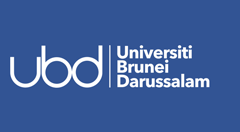ASEAN Journal on Science and Technology for Development
Abstract
In this work, we computationally investigated from quantum chemical calculations (DFT) at the BP86 level with the various basis sets def2-SVP, def2-TZVPP, and TZ2P+, chemical bonding issues of the recently described carbene-analogues gold(I) complexes AuCl-NHEMe (Au1-NHE) with E = C – Pb. The optimized structures and the metal-ligand bond dissociation energy (BDE) were calculated, and the nature of the E→Au bond was studied with charge and energy decomposition methods. The equilibrium structures of the system showed that there were major differences in the bonded orientation from the ligands NHC-NHPb to gold(I) complex between the lighter and the heavier homologues. The BDEs results showed that the metal-carbene analogues bonds were very strong bonds and the strongest bond was calculated for Au1-NHC which had the bond strength De = 79.2 kcal/mol. Bonding analysis of Au1-NHE showed that NHE ligands exhibited donor-acceptor bonds with the σ lone pair electrons of NHE donated into the vacant orbital of the acceptor fragment (AuCl). The EDA-NOCV results indicated that the ligand NHE in Au1-NHE complexes were strong σ-donors and very weak π donor and the bond order in complexes was Au1-NHC > Au1-NHSi > Au1-NHGe > Au1-NHSn > Au1-NHPb. We also realised that the gold-ligand bond was characterized by a π back-donation component from the Au to the ligand. All investigated complexes in this study were suitable targets for synthesis and gave a challenge in designing Au nano-crystals of narrow size distribution from gold(I) complexes that carried versatile N-heterocyclic carbene-analogues NHE.
Publication Date
7-4-2017
Recommended Citation
T.A.N., Nguyen; T.P.L., Huynh; T.X.P., Vo; T.H., Tran; D.S., Tran; T.H., Dang; and T.Q., Duong
(2017)
"Structures, Energies, and Bonding Analysis of Monoaurated Complexes with N-Heterocyclic Carbene and Analogues,"
ASEAN Journal on Science and Technology for Development: Vol. 32:
No.
1, Article 1.
DOI: https://doi.org/10.29037/ajstd.8
Available at:
https://ajstd.ubd.edu.bn/journal/vol32/iss1/1

